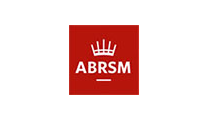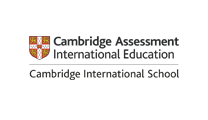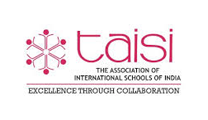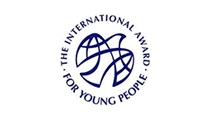- 1. Where did Montessori originate?
- Montessori education was founded in 1907 by Dr. Maria Montessori, the first woman in Italy to become a physician. She based her educational methods on scientific observation of children's learning processes. Guided by her discovery that children teach themselves, Dr. Montessori designed a "prepared environment" in which children could freely choose from a number of developmentally appropriate activities.
- 2. What is the difference between Montessori & traditional education?
-
Montessori emphasizes learning through all five senses, not just through listening, watching, or reading. Children in Montessori classes learn at their own, individual pace and according to their own choice of activities. Learning is an exciting process of discovery, leading to concentration, motivation, self-discipline, and a love of learning. Montessori classes are vertical grouped (children of different ages in same class), forming communities in which the older children spontaneously share their knowledge with the younger ones.
- 3. Can I do Montessori at home with my child?
-
Yes, you can use Montessori principles of child development at home. Look at your home through your child's eyes. Children need a sense of belonging, and they get it by participating fully in the routines of everyday life. "Help me do it by myself" is the life theme of the preschooler. You can find ways for your child to participate in meal preparation, cleaning, gardening, and caring for clothes, shoes, and toys. Providing opportunities for independence is the surest way to build your child's self-esteem.
At the school level many home schooling and other parents use the Montessori philosophy of following the child's interest and not interrupting concentration to educate their children. In school only a trained Montessori teacher can properly implement Montessori education, using the specialized learning equipment of the Montessori "prepared environment." Here social development comes from being in a positive and unique environment with other children.
- 4. Is Montessori good for children with learning disabilities? What about gifted children?
-
Montessori is designed to help all children reach their fullest potential at their own unique pace. A classroom whose children have varying abilities is a community in which everyone learns from one another and everyone contributes. Moreover, vertical grouping allows each child to find his or her own pace without feeling "ahead" or "behind" in relation to peers.
- 5. What ages does Montessori serve?
-
There are more Montessori programs for ages 0-6. Infant/toddler programs (ages 2 months to 3 years), as well as elementary (ages 6-12), adolescent (ages 12-15) and even a few Montessori high schools.
- 6. Are Montessori children successful later in life?
-
Research studies show that Montessori children are well prepared for later life academically, socially, and emotionally. In addition to scoring well on standardized tests, Montessori children are ranked above average on such criteria as following directions, turning in work on time, listening attentively, using basic skills, showing responsibility, asking provocative questions, showing enthusiasm for learning, and adapting to new situations.
- 7. What is the best way to choose a Montessori school for my child?
-
Ask if the school is affiliated with any Montessori organization. Ask what kind of training the teachers have. Visit the school, observe the classroom in action, and later ask the teacher or principal to explain the theory behind the activities you saw. Most of all, talk to your child's prospective teacher about his or her philosophy of child development and education to see if it is compatible with your own.
- 8. Is it true that children in Montessori have too much freedom? I've heard that Montessori is too structured - that there is too much control?
-
In a Montessori program the perfect balance between freedom and limits is maintained, while helping the children to develop "inner discipline" and "normalization." Children in the prepared environment are free to make many decisions for them and are assisted in their independence. The Montessori setting offers "freedom ". As a child grows in their ability to make decisions for themselves, they may earn additional freedom. One of the beauties of the prepared environment is the ability of children of all ages and stages to work together harmoniously. A true community is developed with the children helping each other.
- 9. What are some ground rules?
-
Respect is an important aspect of the Montessori environment. Respect for ourselves, each other and the environment. A child may not interfere with another child or his work, unless invited to do so. A child is free to work with any material (at his ability level and once introduced by the teacher), but must treat it carefully and return it when finished, ready for the next person. A child has the right to work alone, or in a group, or to do nothing (he may be learning by observing others; he may be thinking; or he may simply be relaxing), as long as he does not disturb others.
- 10. What is the idea of young children teaching themselves? How can they teach themselves when they don't yet have such knowledge?
-
Dr. Montessori believed that nature endowed the young child with an inner drive toward self development. She believed that the child is naturally drawn toward that which she/he needs at that time for development. She identified "sensitive periods" in children where they are intent on meeting the needs of that particular sensitivity and drawn to those activities which will aid in that development. The Montessori philosophy and materials are created to this end. Not only are the materials designed to follow the child's natural development, they are "self-correcting". As the child works with them they provide immediate feedback to the child. Montessori terms this quality of the material "control of error". The Montessori teacher observes the child and helps connect her to the various materials, continuously presenting until finding an activity that the child fully engages in, concentrates and emerges from with a sense of fulfillment and accomplishment.
- 11. What does the teacher do?
-
The teacher works with individual children or with children in small groups introduces materials and then leaves the child to work with the materials on his own. Observation of the child is of primary importance in order to determine the needs of each child and in order to gain the knowledge necessary to prepare the environment to aid the children's growth. The teacher is constantly alert to the direction in which the child indicates he wishes to go and actively seeks ways to help the child accomplish such goals.
- 12. How does Montessori affect the children?
-
The Montessori Method encourages the child to be self-disciplined, self-confident, independent, and creative. Children find joy in learning itself rather than in the teacher's approval or any reward. It creates an enthusiasiasm in learning and improves concentration. Montessori education provides a framework in which intellectual and social development goes hand in hand.
- 13. What happens when children go from a Montessori class to a traditional class?
-
Most children adjust readily to new classroom situations. They have developed a high degree of self-discipline and independence in the Montessori environment and adapt well.








